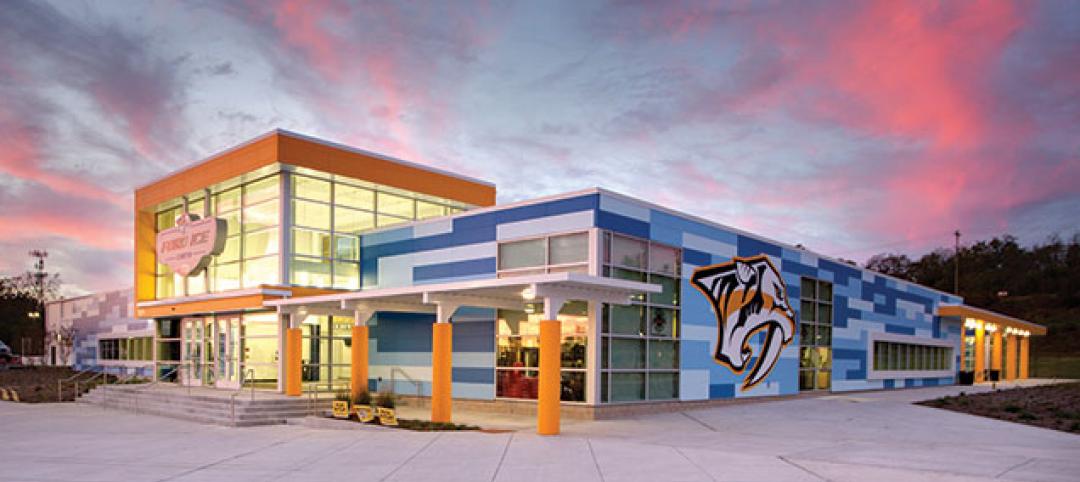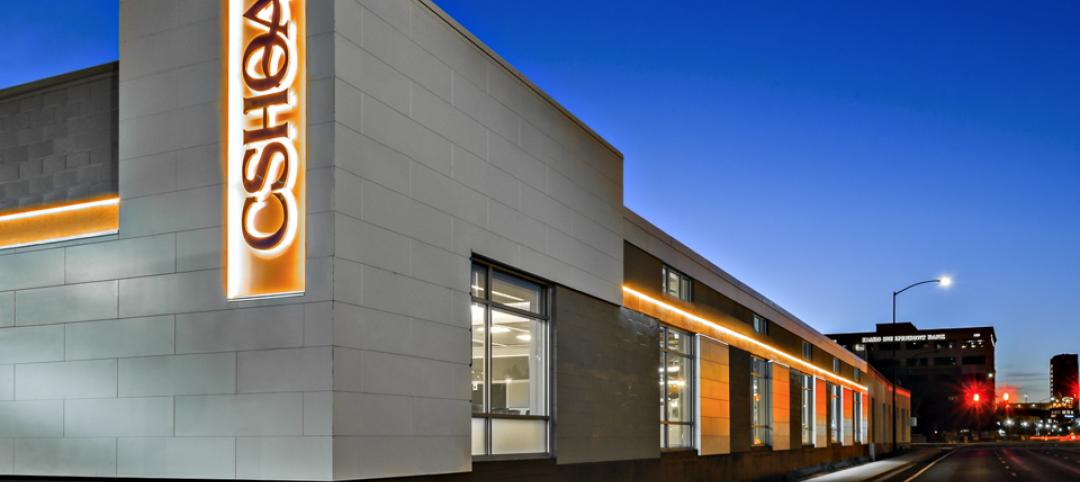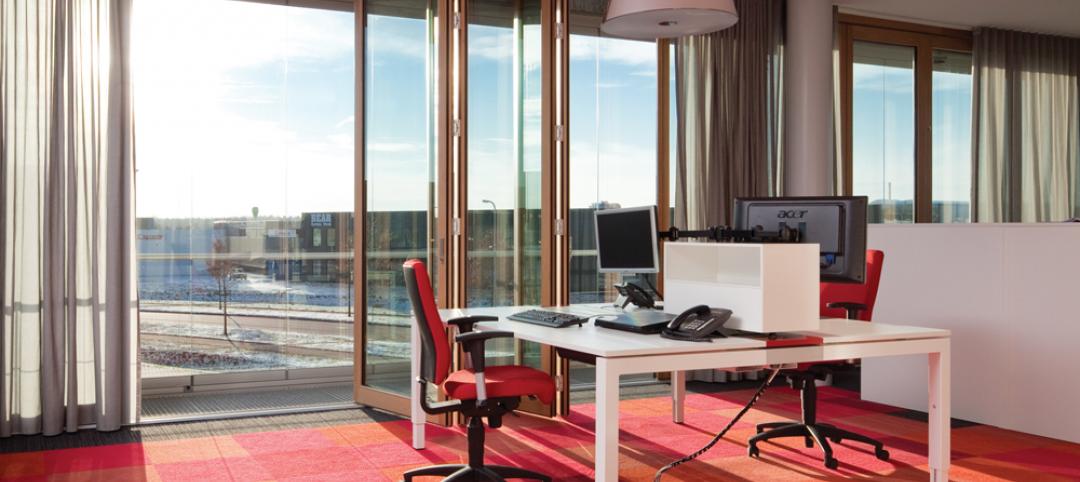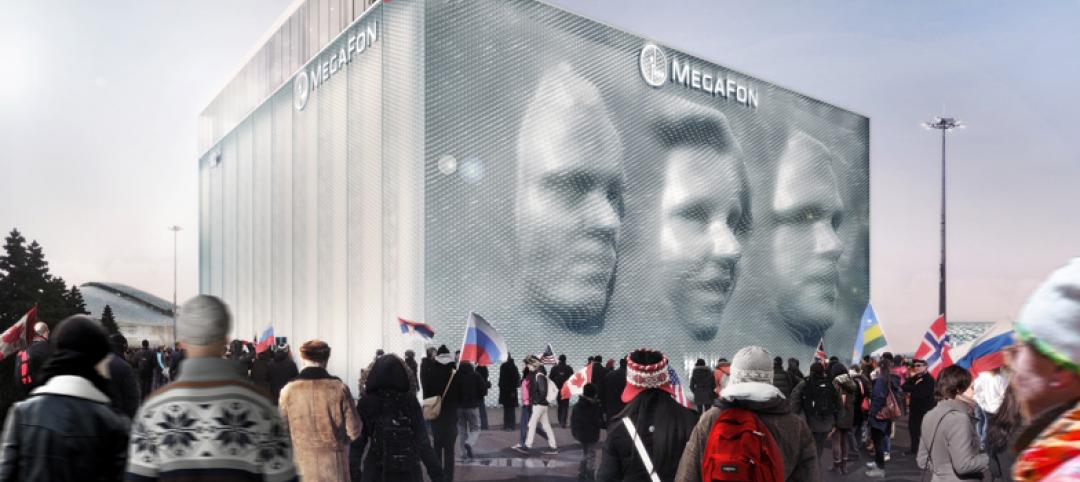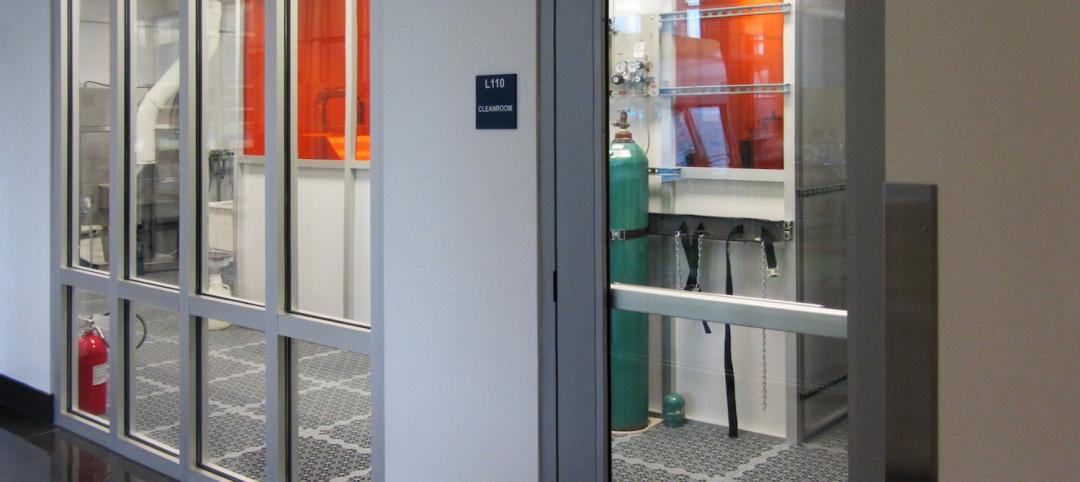A new landmark is currently being built in New York: the One World Trade Center. The corners of the skyscraper's facade will be edged with stainless steel made in Germany. ThyssenKrupp Nirosta (Krefeld) produced the material at its Dillenburg plant using a customized rolling and heat-treatment process. Partner company Christian Pohl GmbH (Cologne) fabricated this high-quality material into complex facade elements for the corners of the One World Trade Center - some 250 tons in total. After the shipment to the USA, the installation work of these elements has just started.
One World Trade Center is owned by the Port Authority of New York & New Jersey and its construction is being managed by Tishman Construction Corporation of New York. Work on the project began in 2006. The building will have 2.6 million square feet of rentable space, the gross square footage is 3.5 million square feet. The high-rise itself will be 417 meters tall, topped with a 124-meter antenna. The total height of 541 meters corresponds exactly to 1,776 feet, a reference to the American Declaration of Independence in 1776. Adjacent to the tower will be a museum and memorial to the victims of September 11, 2001.
The final architectural design of the building now under construction was drawn up in the New York office of the international architectural firm Skidmore, Owings & Merill. The outer facade of the skyscraper will be made of glass. Above the 60-meter-high base, the metal frames surrounding the glass panes will be clad with stainless steel panels. The outstanding architectural feature of the design is that the edges of the building rotate through an angle of 45 degrees from the base upwards. All the corner elements therefore have to be made in a tapering form in line with this axial rotation.
These 1 by 4 meter (40 by 160 inches) facade elements are being made from the corrosion-resistant chromium-nickel-molybdenum stainless steel alloy Nirosta 4404 with a textured finish "Laser" specially designed for this project. "Our material meets the extremely high requirements for uniform surface quality with no streaking or shadowing from any angle regardless of light conditions," says Gert Weiß, head of product service at ThyssenKrupp Nirosta. And Heinrich Robert Pohl, managing director of Christian Pohl GmbH, adds: "Such complex jobs call for supreme technical competencies and a wealth of manufacturing experience. With a high-tech solution we were able to win our extremely demanding customers over to this jointly developed, high-quality German product."
For the US companies involved in the One World Trade Center, the fact that owner, architects and client chose material made in Germany was not without significance. "The quality of our product helped us to win the contract for this out-of-the-ordinary project. Ultimately we regard it as an accolade to be a part of this globally known project in the heart of New York which means so much to so many Americans," emphasize ThyssenKrupp Nirosta and Christian Pohl GmbH, both of whom are based in North Rhine-Westphalia (Germany).
ThyssenKrupp Nirosta in Krefeld (Germany) is one of the world's leading manufacturers of stainless flat products with a broad range of stainless steel grades, sizes and finishes. The company has several sites in Germany and employs around 4,200 people.
ThyssenKrupp Elevator, a sister company of ThyssenKrupp Nirosta, has been also contributing to the project. ThyssenKrupp Elevator was in fact awarded a contract to install all 71 elevators, nine escalators as well as the maintenance of the One World Trade Center.
Christian Pohl GmbH is a longstanding Cologne-based company with activities in metal processing, sheet metal structures and the production of metal facades. The international Pohl group employs around 500 people.
Related Stories
Sponsored | Cladding and Facade Systems | Mar 24, 2015
Designers turn a struggling mall into a hub of learning and recreation
Architects help Nashville government transform a struggling mall into a new community space.
Brick and Masonry | Feb 5, 2015
3D-printed 'cool brick' may provide cooling solution for arid locations
Cool Brick is made of porous ceramic bricks set in mortar. The bricks absorb water, which cools the air as it passes through the unit.
| Dec 28, 2014
Robots, drones, and printed buildings: The promise of automated construction
Building Teams across the globe are employing advanced robotics to simplify what is inherently a complex, messy process—construction.
Sponsored | | Sep 25, 2014
Architects transform warehouse into office space while preserving its historic nature
When it came time for CSHQA, an award-winning, full-service architecture and engineering firm, to move office locations, they didn’t need to look far. The 20,000-square-foot warehouse was not only a mere three blocks away, its renovation would be an ideal demonstration piece to show existing and potential clients.
| Sep 7, 2014
Building the cladding palette: panels, rainscreens, and veneers [AIA course]
When it comes to cost, performance, and aesthetics—not to mention maintenance and long-term resilience—the evaluation of cladding materials and façade systems is more complex than ever. This course is worth 1.0 AIA CES HSW learning units.
| Jul 1, 2014
Sochi's 'kinetic façade' may steal the show at the Winter Olympics
The temporary pavilion for Russian telecom operator MegaFon will be wrapped with a massive digital "pin screen" that will morph into the shape of any face.
| May 27, 2014
Fire Rated Glass contributes to open lab environment at JSNN
Openness and transparency were high priorities in the design of the Joint School of Nanoscience & Nanoengineering within the Gateway University Research Park in Greensboro, N.C. Because the facility’s nanobioelectronics clean room houses potentially explosive materials, it needed to be able to contain flames, heat, and smoke in the event of a fire. SPONSORED CONTENT
| Mar 26, 2014
Zaha Hadid's glimmering 'cultural hub of Seoul' opens with fashion, flair [slideshow]
The new space, the Dongdaemun Design Plaza, is a blend of park and cultural spaces meant for the public to enjoy.
| Mar 20, 2014
Common EIFS failures, and how to prevent them
Poor workmanship, impact damage, building movement, and incompatible or unsound substrate are among the major culprits of EIFS problems.
| Mar 7, 2014
Thom Mayne's high-tech Emerson College LA campus opens in Hollywood [slideshow]
The $85 million, 10-story vertical campus takes the shape of a massive, shimmering aircraft hangar, housing a sculptural, glass-and-aluminum base building.


